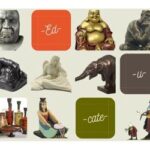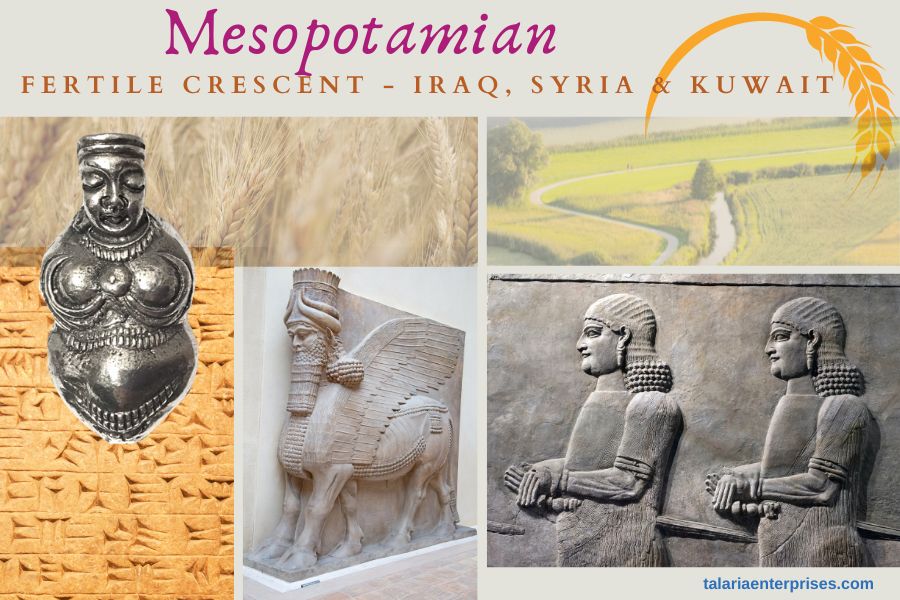The lands of ancient Mesopotamia have a fascinating history as the seeds of early human cultural development. The lands between the Tigris and Euphrates rivers in modern Iraq, Syria and Kuwait, provided a lifeline of fertile lands to the ancient civilizations including Sumer, Akkadian, Babylonian, and Assyrian. We celebrate Mesopotamian art for its evidence of early human ingenuity, organization and prosperity.


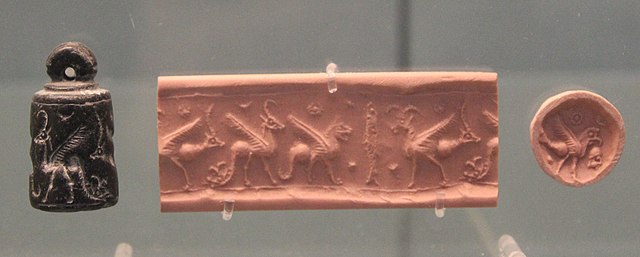
Cylinder Seals – The relief is the impression one sees when the original cylinder seal is rolled across clay. Cylinder seals were engraved with visual stories about mythology, historical events and scenes from everyday life. Sometimes they were used to notarize documents. The cylinder seal was made of a hard material such as limestone, glass or ceramics. It would be rolled over clay to form a continuous pattern like the Greek’s frieze on buildings or our modern wallpaper border placed around the top of a room.
Serpentinite stamp-cylinder seal carved with fish and monsters. 8th-7th century BC, Urartian, East Turkey. ME 130670.
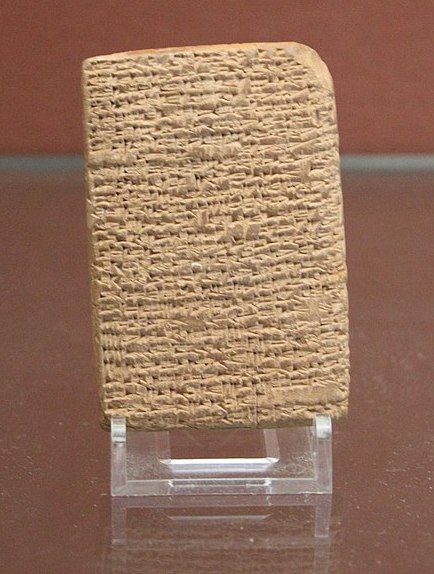
Clay writing tablets – Scribes wrote lists of transactions and inventories on clay tablets. Students also used tablets to learn writing. The early symbols used in pictographs evolved into cuneiform which was an early form of writing. Sumerians are credited with their efficient writing and language skills for keeping records. Piles of tablets have been found in ancient temples. Given that they were made from clay, it is remarkable we have them today.
Clay tablet with a Sumerian spell against demons, calling on Asalluhi, god of magic. Old Babylonian Period (2000-1600 BC). Provenience unknown. BM.96704.

Assyrian Winged Lion and Bull Lamassu – The originals served as guardian creatures to ancient palaces. The colossal originals combine elements of the noblest animals beginning with the head of a man, the body of a lion or bull and an eagle’s wings. There are surviving examples in the British Museum, Louvre Museum and Metropolitan Museum NY. More recently in 2015, ISIL destroyed originals in the Mosul museum as gesture of damnatio memoriae (damnation of memory).
Assyrian lamassu gate guardian from Khorsabad now at Oriental Institute Museum at the University of Chicago.
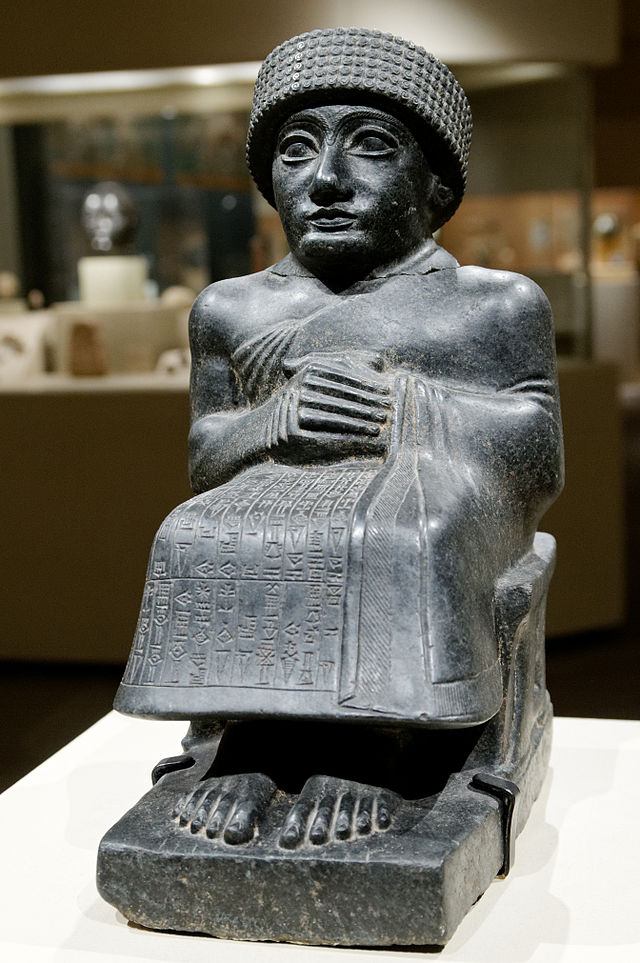
Gudea Sumerian Prince of Lagash – Gudea ruled the state of Lagash in Southern Mesopotamia from c. 2144 – 2124 BC. He is credited with rebuilding temples and installing irrigation channels. In addition, he had quite a number of statue portraits made of himself with the writings of his accomplishments.
Statue of Gudea, Neo-Sumerian period.

